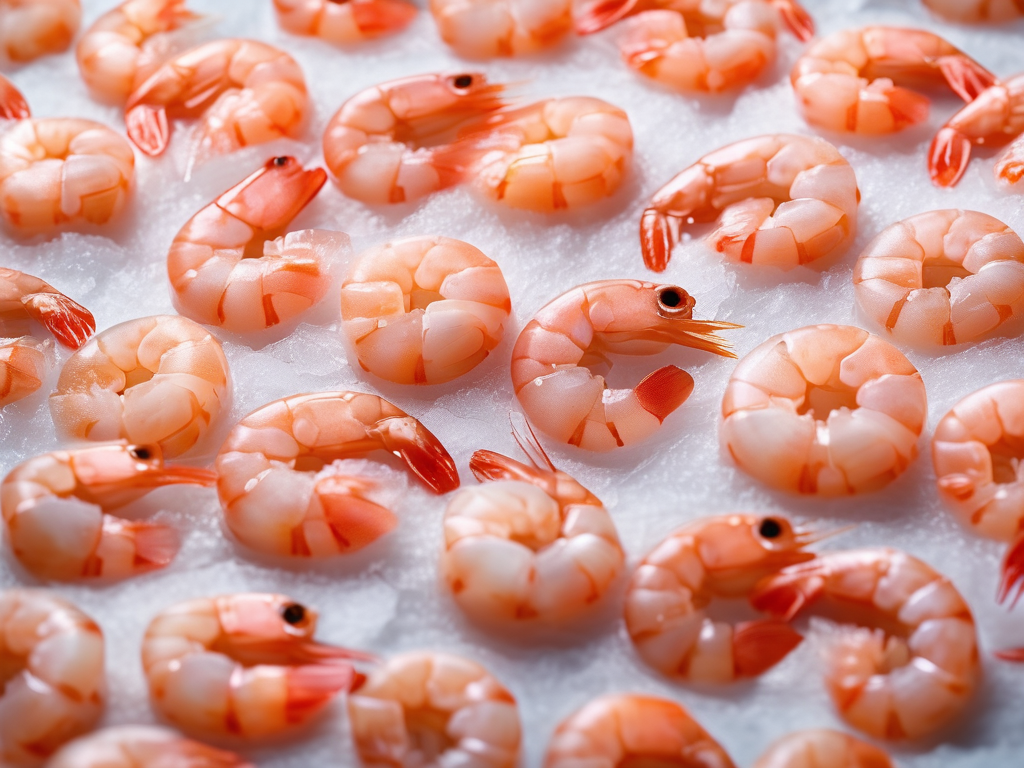
How to Properly Store Frozen Shrimp to Prevent Freezer Burn
Get Your Free Food Safety Cheat Sheet
30 most common foods with instant answers. Print it and stick it on your fridge—completely free!
How to Properly Store Frozen Shrimp to Prevent Freezer Burn
Frozen shrimp is a versatile and convenient protein option that can be used in a variety of dishes, from stir-fries to pasta to salads. However, improper storage of frozen shrimp can lead to freezer burn, which can affect the taste and texture of the shrimp. In this blog post, we will discuss how to properly store frozen shrimp to prevent freezer burn and ensure that your shrimp stays fresh and delicious. (Frozen shrimp)
Understanding Freezer Burn
Before we delve into how to prevent freezer burn, let's first understand what it is. Freezer burn occurs when the moisture in the food evaporates, leaving behind dry, discolored patches on the surface. While freezer burn does not pose a health risk, it can affect the taste and texture of the food, making it less enjoyable to eat.
Causes of Freezer Burn on Shrimp
Freezer burn on shrimp can be caused by several factors, including:
- Improper packaging: If the shrimp is not properly sealed in an airtight container or freezer bag, air can seep in and cause freezer burn.
- Temperature fluctuations: Fluctuations in the freezer temperature can accelerate the evaporation of moisture from the shrimp, leading to freezer burn.
- Long storage times: The longer shrimp is stored in the freezer, the higher the likelihood of freezer burn occurring.
Now that we understand the causes of freezer burn, let's discuss how to properly store frozen shrimp to prevent it.
Proper Storage Tips for Frozen Shrimp
Follow these practical tips to ensure that your frozen shrimp stays fresh and free from freezer burn:
1. Use Airtight Packaging
- Store your shrimp in airtight containers or freezer bags to prevent air from reaching the shrimp and causing freezer burn.
- Remove as much air as possible from the packaging before sealing it to create a tight seal.
2. Label and Date the Packaging
- Always label the packaging with the date when the shrimp was frozen. This will help you keep track of how long the shrimp has been in the freezer and ensure that you use it within a reasonable timeframe.
3. Arrange Shrimp in a Single Layer
- When freezing shrimp, arrange them in a single layer on a baking sheet lined with parchment paper. Once the shrimp are frozen solid, transfer them to airtight containers or freezer bags for long-term storage.
- Storing shrimp in a single layer helps prevent them from sticking together and allows for quicker and more even thawing when you're ready to use them.
4. Maintain Consistent Freezer Temperature
- Keep your freezer temperature at a consistent level, ideally at 0°F (-18°C) or lower, to slow down the rate of moisture evaporation from the shrimp.
- Avoid frequent opening and closing of the freezer door, as this can lead to temperature fluctuations that can contribute to freezer burn.
5. Store Shrimp Away from Strong Odors
- Shrimp can easily absorb odors from strong-smelling foods in the freezer. To prevent this, store your shrimp away from foods like fish, onions, and garlic that can impart unwanted flavors to the shrimp.
Conclusion
Properly storing frozen shrimp is essential to prevent freezer burn and ensure that your shrimp remains fresh and flavorful. By following the tips outlined in this blog post, you can enjoy delicious shrimp dishes without worrying about the quality of your frozen shrimp. Remember to use airtight packaging, label and date your shrimp, arrange them in a single layer, maintain a consistent freezer temperature, and store them away from strong odors. By taking these simple steps, you can prolong the shelf life of your frozen shrimp and enjoy tasty meals whenever you crave them.
For more information on [frozen shrimp](/food/frozen shrimp) and other food safety tips, stay tuned for our upcoming blog posts. Happy cooking! (Frozen shrimp)
Related Posts
Here are some other articles you might find helpful:
Authoritative Food Safety References
These agencies and university labs inform every tip and health precaution we publish.
USDA FoodKeeper – Cold Storage Guidelines
Official refrigerator, freezer, and pantry timelines maintained by the U.S. Department of Agriculture.
Visit USDA FoodKeeperFDA Produce Safety Rule & Grower Guidance
Field-to-fridge handling practices that prevent contamination of fruits, vegetables, and leafy greens.
Visit FDA Produce SafetyCDC Foodborne Illness Prevention Hub
Surveillance-backed guidance on pathogens, symptoms, and steps to reduce foodborne illness risk.
Visit CDC Food SafetyUC Davis Postharvest Technology Center
University research detailing optimal storage atmospheres for produce after harvest.
Visit UC Davis PostharvestPenn State Extension – Home Food Preservation & Safety
Peer-reviewed extension bulletins on safe canning, chilling, and reheating practices.
Visit Penn State ExtensionGet Your Free Food Safety Cheat Sheet
30 most common foods with instant answers. Print it and stick it on your fridge—completely free! Want more? Upgrade to the complete guide with 70+ foods.
Scan your food directly and get instant safety info using our AI-powered camera feature.